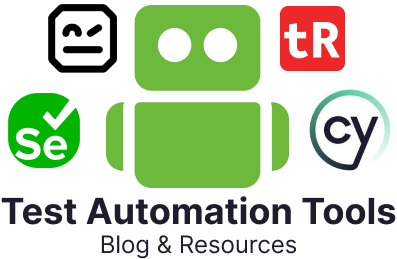
Software testing is a critical step in the software development process. It is the process of evaluating a software application to identify any defects, bugs, or errors. In addition, testing helps ensure that the software application functions as expected and meets end-users needs. In recent years, the demand for software testing has grown significantly. As a result, software development companies have started looking for ways to make the testing process more efficient, accurate, and cost-effective. One of the tools that have emerged as a game-changer in the software testing industry is TestCraft.
TestCraft is a cloud-based test automation platform that allows software testing teams to create and execute automated tests quickly and easily. This article will provide an overview of TestCraft, its features, and advantages. We will also examine how TestCraft works, its benefits, use cases, and how it compares to traditional testing methods.
What is TestCraft?
TestCraft is a codeless Selenium test automation platform for web apps that allows software testing teams to create and execute automated tests easily and quickly. The platform uses artificial intelligence and machine learning algorithms to automatically detect and adapt to changes in the application under test, reducing the time and effort required to create and maintain automated tests.
TestCraft Features
- Codeless Automation: TestCraft uses a codeless automation approach, meaning users do not need programming knowledge to create and run automated tests. The platform provides a drag-and-drop interface that allows users to create test scenarios quickly and easily.
- Visual Test Creation: TestCraft allows users to create automated tests using visual elements such as screenshots, images, and icons. This feature makes it easy to create tests that are easy to understand and maintain.
- AI-Powered Automation: TestCraft uses artificial intelligence and machine learning algorithms to automatically detect and adapt to changes in the application under test. This feature reduces the time and effort required to create and maintain automated tests.
- Integrations: TestCraft can integrate with various software development tools such as Jira, Jenkins, and Selenium. This integration allows users to streamline their testing process and improve collaboration.
Pros and Cons of TestCraft
Advantages of TestCraft
- Saves time and money: TestCraft’s codeless automation and AI-powered automation features help reduce the time and effort required to create and maintain automated tests. This feature saves time and money, allowing software development teams to focus on other critical aspects of the development process.
- Increases efficiency and accuracy: TestCraft’s visual test creation and AI-powered automation features help increase testing efficiency and accuracy. The platform provides a user-friendly interface that allows users to create tests quickly and easily. TestCraft’s AI-powered automation feature also ensures that tests are accurate and reliable.
- Reduces errors and defects: TestCraft’s AI-powered automation feature helps reduce the number of errors and defects in the application under test. The platform automatically detects and adapts to changes in the application, reducing the likelihood of errors and defects in the testing process.
- Improves collaboration and communication: TestCraft’s integration feature allows software development teams to collaborate and communicate effectively. The platform can integrate with various software development tools, ensuring everyone is on the same page.
Disadvantages of TestCraft
- Complex initial setup: TestCraft requires a lot of effort at the initial stage to set up and configure.
- Limited platform support: TestCraft only works for web testing, which means no testing for mobile apps.
- Limited customization: TestCraft’s visual test creation feature is a great benefit to those without programming experience, but it may be limiting for those who want to customize their tests beyond the provided visual elements. This can be a drawback for teams with more advanced testing needs.
- Limited device and browser support: TestCraft may not support all devices and browsers, which can be an issue for teams with a diverse user base. This can result in gaps in testing coverage and may require additional resources to address.
Overall, while TestCraft offers numerous benefits to software development teams, it is important to consider these potential drawbacks before adopting the platform. Teams should evaluate their testing needs and compare TestCraft to other testing tools to determine the best option for their organization.
How TestCraft Works
TestCraft uses a visual approach to test automation, allowing users to create automated tests using visual elements such as screenshots, images, and icons. In addition, the platform’s AI-powered automation feature automatically detects and adapts to changes in the application under test, reducing the time and effort required to create and maintain automated tests.
Here’s a high-level guide on how TestCraft works
Step 1: Sign up for TestCraft: The first step is to sign up for TestCraft. Users can sign up for a free trial or purchase a subscription.
Step 2: Create a project: After signing up, users can create a new project in TestCraft. The platform provides a user-friendly interface allowing users to create and manage projects efficiently.
Step 3: Create a test scenario: Once the project is created, users can start creating test scenarios. TestCraft’s visual test creation feature allows users to create tests quickly and easily using visual elements such as screenshots, images, and icons. The platform also provides a drag-and-drop interface that makes it easy to create test scenarios.
Step 4: Run the test scenario: After creating the test scenario, users can run the test scenario to check if it works as expected. TestCraft’s AI-powered automation feature automatically detects and adapts to changes in the application under test, ensuring that the test scenario runs accurately and reliably.
Step 5: Analyze the results: After running the test scenario, users can analyze the results to identify any defects, bugs, or errors. TestCraft provides various analytics tools that allow users to identify issues quickly and efficiently.
Step 6: Fix the issues: After analyzing the results, users can fix any issues identified in the testing process. TestCraft’s integration feature allows users to collaborate and communicate effectively, ensuring everyone is on the same page.
TestCraft vs. Traditional Testing Methods
- Codeless Automation: TestCraft uses a codeless automation approach, meaning that users do not need any programming knowledge to create and run automated tests. Traditional testing methods require users to have programming knowledge, which can be time-consuming and challenging.
- AI-Powered Automation: TestCraft’s AI-powered automation feature helps reduce the time and effort required to create and maintain automated tests. Traditional testing methods do not offer this feature, which can be time-consuming and inefficient.
- Visual Test Creation: TestCraft’s visual test creation feature makes it easy to create tests quickly and easily using visual elements such as screenshots, images, and icons. Traditional testing methods require users to write code to create tests, which can be time-consuming and challenging.
- Testing Efficiency and Accuracy: TestCraft’s AI-powered automation and visual test creation features help increase testing efficiency and accuracy. Traditional testing methods can be time-consuming and often require extensive manual testing, which can be prone to errors and defects.
- Cost Savings: TestCraft’s codeless automation and AI-powered automation features help reduce the time and effort required to create and maintain automated tests, resulting in significant cost savings. Traditional testing methods can be costly, requiring significant investment in resources and personnel.
Conclusion
TestCraft is an innovative software testing platform that provides a range of benefits, including increased efficiency, accuracy, and cost savings. The platform’s codeless automation and AI-powered automation features help reduce the time and effort required to create and maintain automated tests, allowing software development teams to focus on other critical aspects of the development process. TestCraft’s visual test creation and collaboration features also help improve testing efficiency and accuracy, reducing the likelihood of errors and defects in the application under test. Overall, TestCraft is an attractive option for software development teams looking to improve their testing process for web apps and streamline their development workflow.

